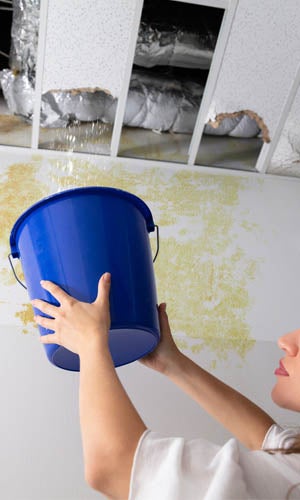Overview To Water Leakage Discovery In Your Home
Overview To Water Leakage Discovery In Your Home
Blog Article
We've stumbled on this post involving Detecting hidden plumbing leaks directly below on the web and figured it made perfect sense to talk about it with you on this page.

Early discovery of dripping water lines can alleviate a potential disaster. Some tiny water leakages may not be noticeable.
1. Examine the Water Meter
Every residence has a water meter. Checking it is a guaranteed way that aids you find leaks. For starters, shut off all the water resources. Make certain nobody will certainly flush, utilize the tap, shower, run the washing device or dish washer. From there, go to the meter and also watch if it will certainly change. Considering that no one is utilizing it, there ought to be no motions. If it moves, that suggests a fast-moving leak. Similarly, if you identify no changes, wait an hour or 2 and also check back once again. This suggests you might have a sluggish leak that could also be underground.
2. Examine Water Intake
If you detect sudden modifications, in spite of your consumption being the exact same, it suggests that you have leakages in your plumbing system. An abrupt spike in your costs suggests a fast-moving leak.
A consistent increase every month, even with the same behaviors, reveals you have a slow leak that's additionally slowly intensifying. Call a plumber to thoroughly examine your home, particularly if you really feel a warm location on your floor with piping beneath.
3. Do a Food Coloring Test
When it comes to water usage, 30% comes from toilets. If the shade somehow infiltrates your dish throughout that time without flushing, there's a leakage in between the container and bowl.
4. Asses Outside Lines
Do not fail to remember to check your exterior water lines too. Ought to water leak out of the link, you have a loosened rubber gasket. One small leak can throw away bunches of water as well as spike your water expense.
5. Check as well as Analyze the Circumstance
Property owners must make it a practice to inspect under the sink counters and even inside closets for any type of bad odor or mold growth. These two red flags indicate a leakage so prompt focus is needed. Doing routine inspections, also bi-annually, can conserve you from a major trouble.
Extra notably, if you know your residence is already old, maintain a watchful eye on your heaters, hose pipes, pipelines etc. Look for stainings and compromising as a lot of devices and also pipelines have a life span. They will certainly additionally naturally weaken due to tear and wear. If you suspect leaking water lines in your plumbing system, do not wait on it to rise. Call a professional plumber right now so you don't end up with a horrible mess in your home.
Early detection of leaking water lines can alleviate a prospective disaster. Some small water leakages may not be noticeable. Inspecting it is a proven way that aids you discover leaks. One tiny leakage can lose loads of water as well as surge your water bill.
If you presume leaking water lines in your plumbing system, don't wait for it to intensify.
WARNING SIGNS OF WATER LEAKAGE BEHIND THE WALL
PERSISTENT MUSTY ODORS
As water slowly drips from a leaky pipe inside the wall, flooring and sheetrock stay damp and develop an odor similar to wet cardboard. It generates a musty smell that can help you find hidden leaks.
MOLD IN UNUSUAL AREAS
Mold usually grows in wet areas like kitchens, baths and laundry rooms. If you spot the stuff on walls or baseboards in other rooms of the house, it’s a good indicator of undetected water leaks.
STAINS THAT GROW
When mold thrives around a leaky pipe, it sometimes takes hold on the inside surface of the affected wall. A growing stain on otherwise clean sheetrock is often your sign of a hidden plumbing problem.
PEELING OR BUBBLING WALLPAPER / PAINT
This clue is easy to miss in rooms that don’t get much use. When you see wallpaper separating along seams or paint bubbling or flaking off the wall, blame sheetrock that stays wet because of an undetected leak.
BUCKLED CEILINGS AND STAINED FLOORS
If ceilings or floors in bathrooms, kitchens or laundry areas develop structural problems, don’t rule out constant damp inside the walls. Wet sheetrock can affect adjacent framing, flooring and ceilings.
https://www.servicemasterbyzaba.com/blog/how-to-detect-water-leakage-in-walls/

We had been made aware of that article on Finding hidden leaks through someone on another blog. Liked our piece of writing? Please share it. Let other people discover it. Bless you for your time. Visit again soon.
Report this page